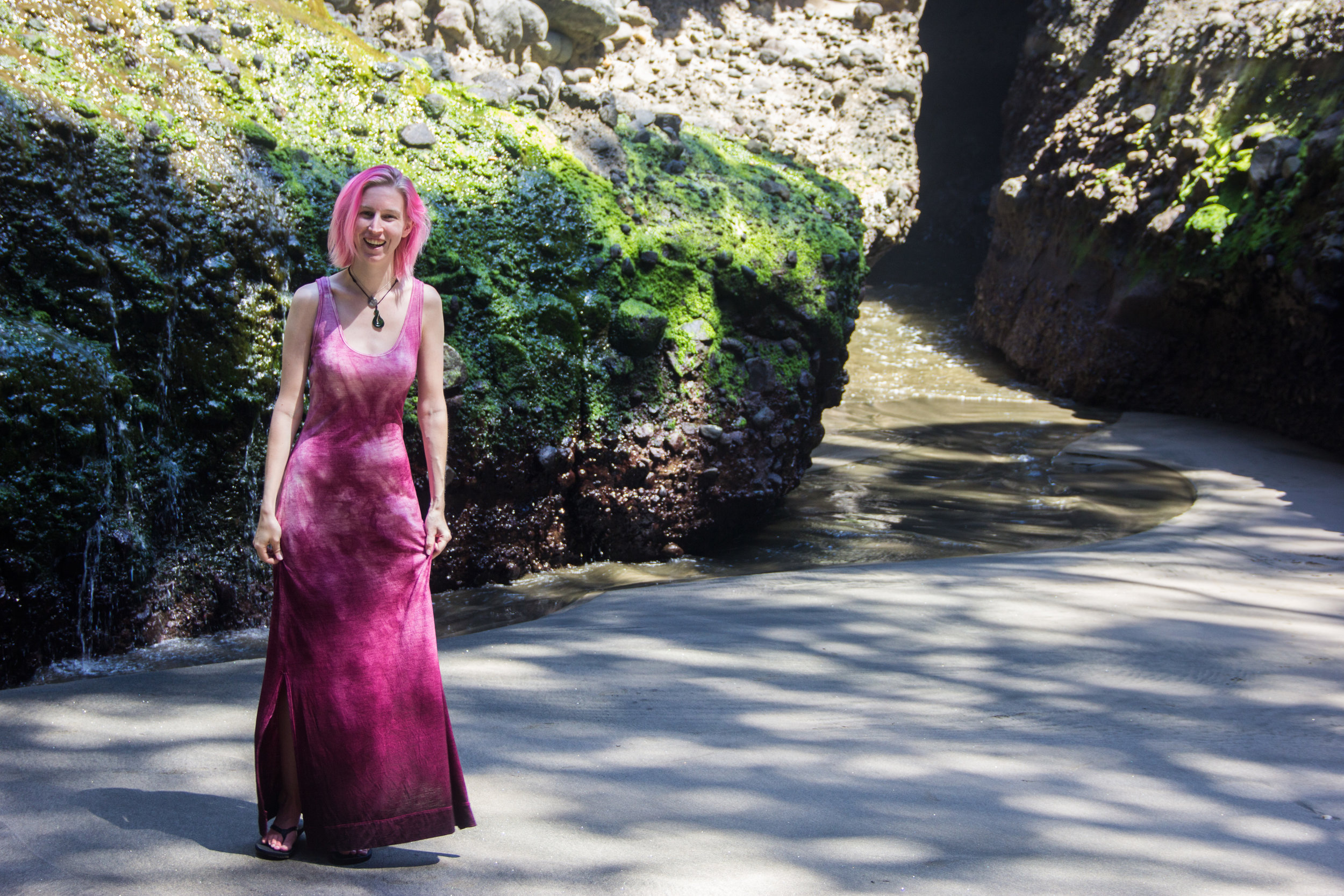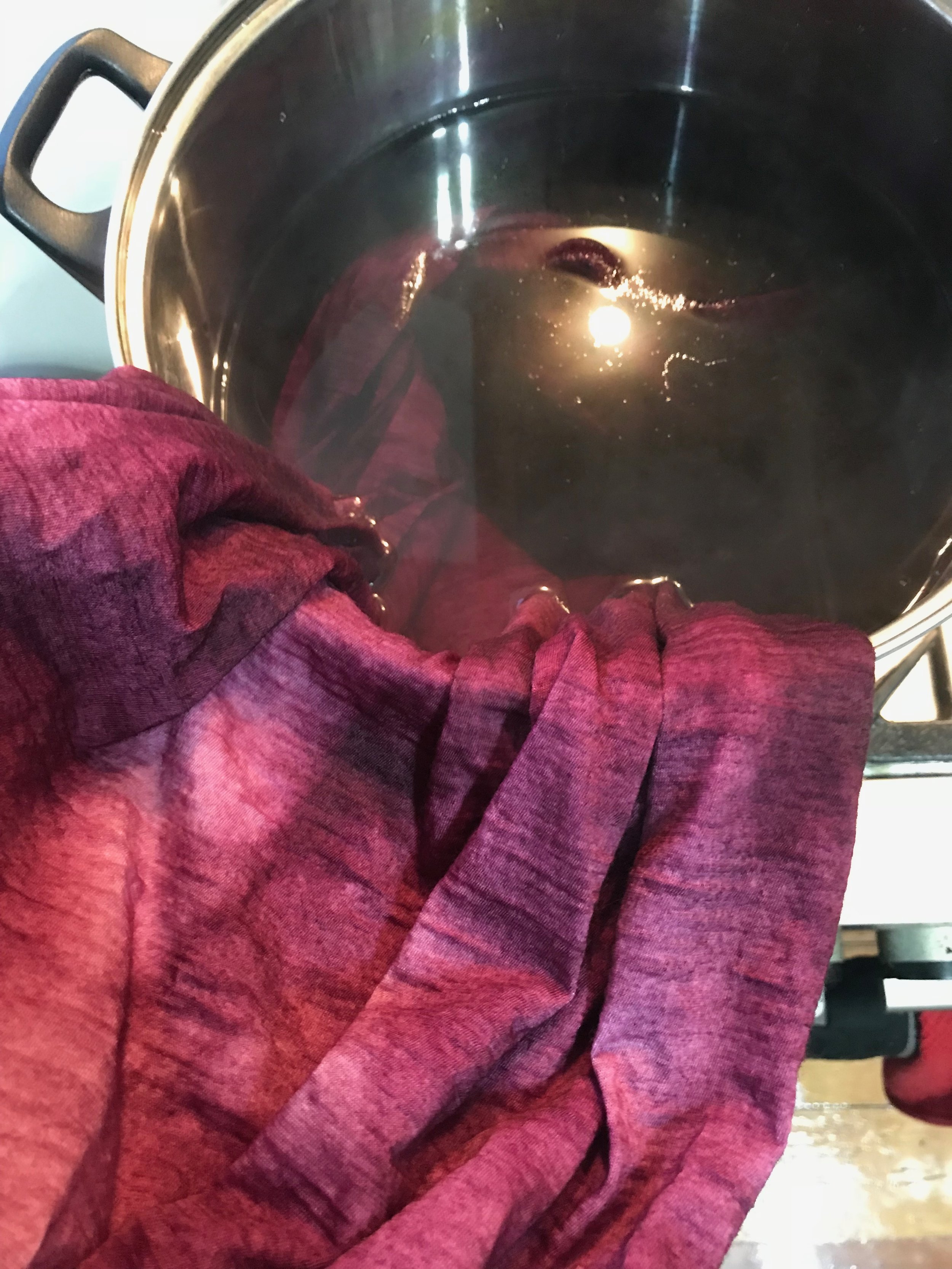Well. To be honest, I probably have a snowball’s chance in Australia of coming close to meeting the awesomeness-levels of last week’s hot pink faux fur hand tailored masterpiece. But I suppose that’s the way things work - I feel like each of the projects I work on is awesome in its own different way, and Pink Thing’s ways were just a bit less….subtle.
Today, I bring you a beautiful contradiction, and the opposite of a faux fur coat. Today, I bring you a merino wool…summer dress?
Jon, blog photographer extraordinaire, took these photos on a trip to the beach a few weekends ago. I was wearing my sunglasses and took them off for the photos so of course I feel like all these photos look very naked!
Hear me out, okay? When I say wool clothes, most people shudder at the thought of that one particularly atrocious, itchier-than-all-else and also very sweaty sweater that they were made to wear around the holidays. I actually have exactly those same memories, and they smell like mothballs. This is not that sweater.
The merino sheep hasn’t changed much in recent decades, but fabric technology really, really has. Textile manufacturers have been able to use merino to create thinner, smoother yarns and knit them up into a fabric that bears zero resemblance to those itchy sweaters of our youths. Merino is a natural fiber with great elasticity along with profound moisture wicking and insulating properties, plus it’s less susceptible to staining than cotton, and it’s more durable - thanks in part to the longer staple length and considerable crimp of the merino fiber. Wool can retain up to 30% of its weight in water, and retains its insulating properties when wet (unlike cotton) - and it dries quicker too! While we’re comparing it to cotton, I have one more statistic for you - it’s more sustainable to produce. It takes 2,500 liters of water to grow enough cotton for 1 t shirt, and 500,000 liters to produce a whole metric ton of wool - which would, in turn, produce approximately 7,692 t shirts. (The source for all these fancy numbers is here, but if you just google ‘merino vs cotton’ you’ll be pretty inundated with similar stats)
So. Now that we’ve established that merino has superpowers and is very much not restricted to itchy sweaters (this is the 21st century, after all!) let’s talk about my new dress!
Well. New-ish dress. This is one of the pieces I last-minute added to my Rarotonga Vacation Capsule Wardrobe, and I am so glad that I did! I love that a long dress immediately looks like you’ve put some effort in, but that it’s just one piece to think about when you’re getting dressed - especially perfect for a vacation because you don’t have to plan a whole outfit! Also, I always feel just a little bit more like I’ve got my life together in a floor-length dress. Maybe it’s because I wear them so infrequently, but they seem very elegant to me. Basically - This dress makes me feel like a princess, AND it’s secret pajamas. AND I threw it together in one afternoon - done by dinnertime. Win, Win, Win!
Let’s start at the beginning, shall we? In high school, I used to live in tank tops from Target. They’re ideal for layering under shirts and cardigans, and I liked the fabric and cut, so I probably had about eight of them in rotation. I wore them all into the ground and ended up turning them into rags one by one, but fortunately I had the forethought to trace a pattern off of one before relegating it to mopping up screen printing spills and dye accidents. I haven’t actually gotten around to making any more tank tops yet, but I had the pattern neatly folded away in the bag I keep all my patterns in.
I don’t remember exactly where the idea sprung, but I remember thinking that it was critically important that I have a down-to-the ground sleeveless knit dress with some kind of side slits, which I would ombre dye and then wear while swanning about on the beach. I had my sun kimono (to be blogged) if I wanted to keep my shoulders covered, which gave me options for sleeveless if I wanted. I remember thinking it seemed like the ideal thing to wear to the beach (swimsuit underneath if required) and I couldn’t believe that I hadn’t seen many people in maxi dresses like it at the beach in the past.
I bought white merino fabric to use for my dress because I thought it was better suited to my purposes - breathable, wrinkle-resistant, stain resistant, soft, and easy to dye with acid dyes for the ombre I wanted. Plus, in case my hem got wet in the ocean, the fabric would be less likely to be dragged down by its own weight, and it would dry quicker than a cotton would have. Plan in place, I prewashed and then laid my fabric out for cutting. I measured myself standing up from my shoulder to the floor, and then laid my tank top pattern out at one end of the fabric, and cut straight down from the hem of the tank top until I’d reached my height measurement plus a few inches for wiggle + hem. The pattern is only two pieces - front and back, both cut on the fold - plus a bit of self binding for the neck and armholes. I constructed the dress using silk thread for all but the side seams because silk takes dye using the same method as wool so my thread would dye evenly with the fabric.
I used a twin needle for the topstitching on the seam binding, and hemmed the dress with a wide hem for a bit of added weight. I also didn’t sew the side seams all the way down to the floor - I left slits in each side which end just below the knee, which I think gives this dress a little bit of something extra, and also makes it easier to walk.
So. White dress, finished. But this is not a white dress! It was never going to be a white dress. I decided not to worry too much about the even-ness of the dye (I like a little nod to tie-dye!) and just went for a general light-to-dark top to hem. I set up my dye pot on the stove just below a boil with 1/2tsp of Royal Purple Acid Dye from Dharma Trading, plus two tablespoons of citric acid (this goes in immediately before the fabric, because the reaction begins as soon as the dye mixes with the citric. In most cases I’ll add the citric after the fabric is already in the pot with the dye. Some people use vinegar instead, but vinegar smells and citric isn’t that much more expensive - find it with the canning/preserve supplies at your grocery store) and soaked my now-complete dress in water. The presoak is particularly important with merino because liquids tend to roll off of it before absorbing (it’s pretty water resistant to splashes and such) and I needed the fabric to want to absorb the dye - otherwise things would come out much too patchy.
Using a pair of tongs, I gathered the dress up by its shoulders and rolled it around the tongs until the hem hung down by about 10”, and dunked the hem in the dye pot. I used another pair of tongs to swish things around a bit, and slowly lowered the dress into the dye pot. I only dunked the lightest area at the top of the dress for a few seconds, and then rolled it up onto the tongs once again. I did a lot of massaging, especially around the seams, to make sure the dye saturated well, and the hem I left in the pot for about 20 minutes until all the dye had exhausted.
What does that mean, exhausted? Let me tell you a really cool thing about acid dyes, my fiber-loving friends. If you get your proportions right (fabric to citric to dye) and that is a big if because it doesn’t always happen and there are a lot of factors like fiber content, color of dye, desired intensity - then the dye will be completely absorbed into the fabric and what’s left in your dye pot will be completely clear, just like it was when you started! It could just be me, but that kind of thing really tickles me. It’s so rewarding when it exhausts successfully because it means I’ve done my math right! This particular project DID exhaust - whoo!
There isn’t usually much bleed during rinse for acid dyes, but I still rinse them under hot and then cool water and then run them through a wash cycle in my machine before I call the project 100% done. Such was the story with this dress, and once it was washed and dried again it was all ready for my trip to Rarotonga!
I suppose this is the benefit of not immediately blogging about something; I have a chance to wear an item and figure out what its benefits and flaws are. The post doesn’t end when I finish telling you about the last stitch (or rinse, in this case) rather, it ends when I tell you how the thing has fared out in ‘the wild’. I took it to Rarotonga and it was excellent: It was that kind of pre-summer ‘cool in the shade’ fringe season that meant I felt perfectly temperate in my dress, it was easy to throw on over my swimsuit, and it looked respectable enough to come in off the beach to a restaurant, or pretend to be a resort visitor long enough to get coffee. A princess in secret pajamas, I felt like I looked precisely as one should look on a tropical vacation. I did find that for walking on the beach I preferred to pull the dress up on one side and knot it at my hip, but that actually worked perfectly with the side slits, and I think it really showed off the dye too! Bonus. I’ve worn it a few times since the weather has warmed up here as well - not only to Piha (one of the western beaches, where most of these photos were taken) but also on weekends for shopping and lounging around the house. I’m very much here to tell you that merino shouldn’t be relegated to winter wear - it’s perfect for all seasons and it’s positively delicious to wear.
It’s starting to feel less like a one-off vacation piece and more like a summer staple. I may not end up with a whole army of these, but I think as proof of concept and wardrobe addition, the only flaw I can think of is that I’m not sure I’d wear it to work. Especially with it tied at the hip, I feel like I can be pretty active in this dress, running around on the beach, but that it also looks elegant enough to transition from day to evening easily.












